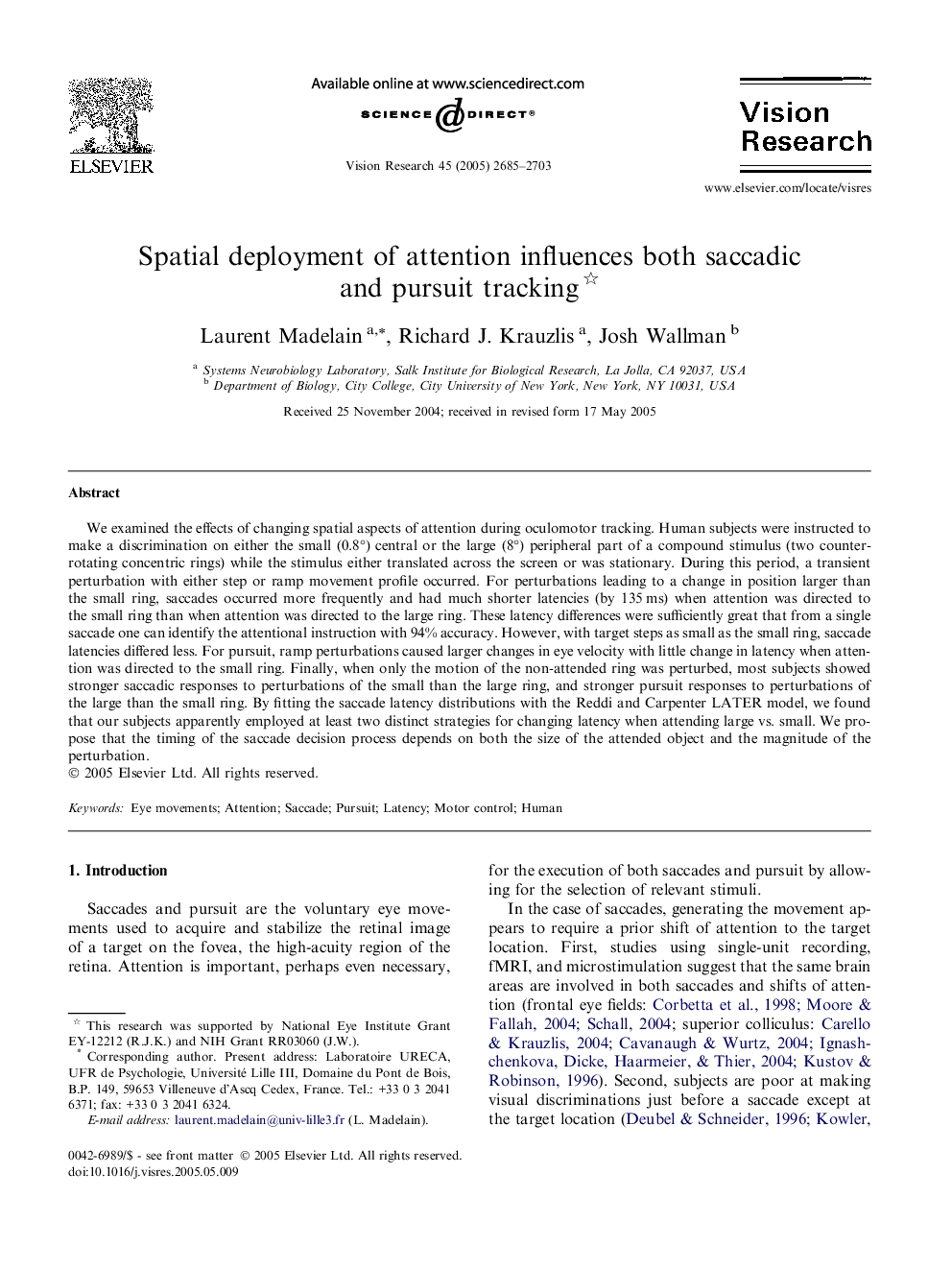| Article ID | Journal | Published Year | Pages | File Type |
|---|---|---|---|---|
| 4036067 | Vision Research | 2005 | 19 Pages |
We examined the effects of changing spatial aspects of attention during oculomotor tracking. Human subjects were instructed to make a discrimination on either the small (0.8°) central or the large (8°) peripheral part of a compound stimulus (two counter-rotating concentric rings) while the stimulus either translated across the screen or was stationary. During this period, a transient perturbation with either step or ramp movement profile occurred. For perturbations leading to a change in position larger than the small ring, saccades occurred more frequently and had much shorter latencies (by 135 ms) when attention was directed to the small ring than when attention was directed to the large ring. These latency differences were sufficiently great that from a single saccade one can identify the attentional instruction with 94% accuracy. However, with target steps as small as the small ring, saccade latencies differed less. For pursuit, ramp perturbations caused larger changes in eye velocity with little change in latency when attention was directed to the small ring. Finally, when only the motion of the non-attended ring was perturbed, most subjects showed stronger saccadic responses to perturbations of the small than the large ring, and stronger pursuit responses to perturbations of the large than the small ring. By fitting the saccade latency distributions with the Reddi and Carpenter LATER model, we found that our subjects apparently employed at least two distinct strategies for changing latency when attending large vs. small. We propose that the timing of the saccade decision process depends on both the size of the attended object and the magnitude of the perturbation.
